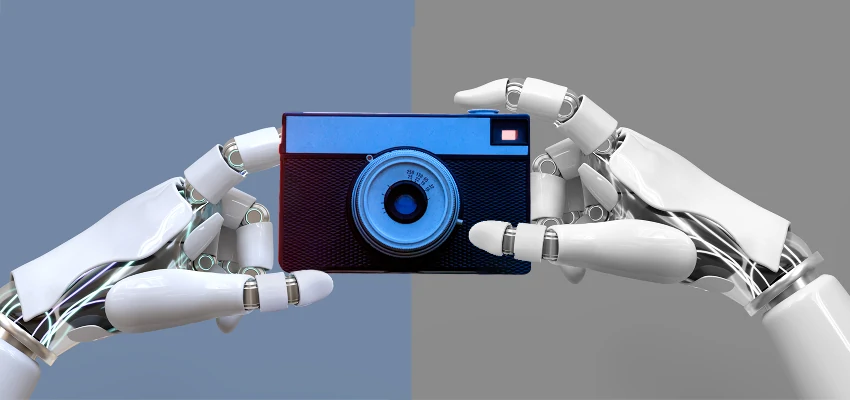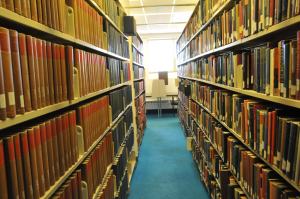AI in photojournalism is revolutionizing the way we capture, analyze, and preserve the visual narratives that shape our understanding of the world. As artificial intelligence photography advances, it presents both exciting opportunities and formidable challenges for journalists and photographers alike. The rise of AI image analysis tools offers the potential to catalog extensive archives, allowing for the preservation of moments that define our visual history. However, with the rapid evolution of photography technology trends, photojournalists must navigate concerns regarding authenticity and misinformation. This intersection of innovation and legacy raises critical questions about the future of photojournalism and the integrity of visual storytelling.
Artificial intelligence’s role in visual reporting is becoming increasingly significant, as it transforms how images are created and interpreted. The incorporation of advanced algorithms into photography allows for more efficient processing and organization of vast archives, which are crucial in addressing the challenges faced by photojournalists. By utilizing AI, media professionals can enhance their storytelling techniques and engage with historical context in more meaningful ways. Nonetheless, this technological integration brings forth discussions about the preservation of visual legacy amidst concerns of authenticity and copyright. As we advance, exploring these dimensions of AI in visual media will be essential for ensuring that the essence of photojournalism remains intact.
Exploring the Role of AI in Photojournalism
The emergence of artificial intelligence (AI) in photojournalism presents a transformative opportunity, fostering new methods for analyzing and archiving images that document critical historical events. As AI tools become increasingly sophisticated, they can offer insights into images with significant depth, going beyond mere technical details. For instance, AI’s ability to recognize intricate emotional expressions within a photograph can redefine how we interpret images from conflict zones. This nuanced understanding can help journalists and historians after the fact by providing context and exploring the multilayered stories behind each captured moment.
However, the integration of AI in photojournalism is not without its challenges. Key issues such as the erosion of trust due to misinformation and the potential misuse of AI-generated imagery raise pressing concerns among photojournalists. As they strive to maintain authenticity in their work, the integration of AI must be approached cautiously. Balancing these technological advancements with ethical considerations is imperative to ensure that photojournalism continues to uphold its commitment to truth and reliability.
Preserving Visual History through AI Image Analysis
In the face of evolving technology, preserving visual history has become an urgent challenge for photojournalists. With massive archives of unpublished work, leveraging AI image analysis offers a promising solution to organize, catalogue, and contextualize these vast collections. By harnessing AI, photojournalists can create immersive archives where images are not only stored but also interpreted through the lens of historical narratives. This can offer future audiences a deeper connection to the emotional and cultural significance of the photographs, enabling a richer understanding of the events depicted.
Moreover, the preservation of visual history through AI extends beyond mere storage; it invites exploration of the diverse narratives behind each image. By integrating AI capabilities in analysis, we may reveal unknown facets of a photographer’s intent, which traditional methods may overlook. Engaging with the technology responsibly allows photojournalists to ensure that their legacy is not only preserved but also enhanced, strengthening the ties between past events and present interpretations.
The Challenges of AI in Photojournalism
AI technology undoubtedly brings many advantages, yet it also poses distinct challenges to the field of photojournalism. The rise of generative AI has led to the creation of hyper-realistic images that can blur the line between fact and fiction. Consequently, photojournalists face the dilemma of distinguishing authentic narratives from engineered ones, which can potentially damage public trust in their craft. Ensuring that the stories captured through the lens are accurately reflected and represented is critical, particularly within a society that increasingly relies on images to understand complex issues.
Another significant challenge is the concern surrounding copyright and ownership of images. Photographers worry that their work might be improperly exploited by AI models, raising questions about consent and the rightful authorship of visual content. This concern demands a thorough discussion about the legal and ethical frameworks that should guide the use of AI in photojournalism. Navigating these challenges will be necessary to create a safe and just environment for photojournalists as they adapt to the rapid advancements in photography technology and trends.
AI-Driven Innovations in Photography Technology Trends
The photography landscape is undergoing profound changes, driven by advancements in AI technology that shape contemporary photography trends. Innovations such as AI-assisted editing tools and enhanced image recognition capabilities are revolutionizing the workflow for photographers, enabling them to produce compelling visual narratives with greater efficiency. This technological evolution can empower photographers to focus on creativity and storytelling while automating the more technical aspects of image analysis.
Additionally, these innovations bring about new possibilities for engagement with audiences. AI can help in curating and personalizing content, ensuring that stories resonate more effectively with viewers. This adaptability not only enhances the viewing experience but also supports the overarching goal of photojournalism: to inform and educate the public about significant events of our time. As the industry continues to evolve, staying abreast of these photography technology trends will be crucial for photojournalists eager to harness the power of AI responsibly.
Ethics of AI in Preserving Photojournalism Legacies
As AI technology grows more prevalent in photography, ethical considerations come to the forefront, especially regarding the preservation of photojournalism legacies. Many photojournalists worry about the implications of AI-generated content and how it may alter public perceptions of realism and authenticity. The ethical use of AI is essential to ensure that these visual stories remain anchored in the truth and emotional gravity they present. Photographers must remain vigilant about the potential misuse of AI tools while balancing innovation with their core values of honesty and integrity.
Furthermore, discussions about ethical AI use extend to the relationship between technology and archival work. The promise of AI to organize and augment vast collections of historical images raises questions about authorship, representation, and access. Advocating for fair practices in how AI interacts with these archives ensures that the original intent of the photographers is respected. By fostering an ethical framework, the photojournalism community can work toward a future where AI enhances rather than detracts from its foundational principles.
Impact of AI on Photojournalism’s Future
The trajectory of photojournalism is being shaped by the dual forces of technological innovation and societal shifts. AI’s influence on photography does not just redefine the crafting of images but also alters how audiences consume visual narrative. With AI’s capabilities to fashion compelling visuals, the demand for authenticity in journalism grows stronger. Photojournalists are today challenged to embrace these advancements while fostering trust among their audiences by prioritizing factual integrity in their work.
In facing the future, photojournalists and technologists must collaborate to ensure that the art of storytelling remains at the forefront of the photographic experience. By understanding AI’s strengths and limitations, the industry can develop innovative strategies to address contemporary challenges and embrace opportunities that AI presents. Ultimately, the goal should be to create a landscape where photojournalism not only adapts to change but drives it, reinforcing its significance in our visual culture.
AI’s Role in Enhancing Visual Storytelling
AI technology has the potential to significantly enhance visual storytelling by enabling photojournalists to convey deeper narratives through their images. With AI image analysis, photographers can extract layers of meaning from their work, revealing hidden contexts and emotions that may not always be apparent to the naked eye. This technology allows for a more profound engagement with the audience, as viewers can connect with the stories behind the images on a more personal level.
Moreover, AI can assist in curating and disseminating photojournalism in a way that elevates important stories and voices that deserve attention. By providing tools for better organization and accessibility, AI helps to ensure that diverse narratives are brought to forefront, enriching the public discourse around global events. This evolution can ultimately create a stronger advocacy for social justice through the power of photography, as audiences gain access to stories that challenge perceptions and foster understanding.
Navigating the Intersection of Technology and Photojournalism
Navigating the intersection of technology and photojournalism requires a thoughtful approach, especially as the impact of AI becomes more pronounced in the field. Photojournalists must remain aware of the opportunities AI presents, such as streamlining workflows and enhancing image analysis while also recognizing the inherent risks that accompany such powerful tools. Engaging in discussions about the consequences of AI integration, including potential misinformation and loss of trust, is crucial to establishing a responsible path forward.
Furthermore, the collaboration between traditional photojournalism and emerging technologies can yield innovative solutions that uphold the standards of the craft. Keeping open lines of communication between technologists, ethicists, and photojournalists will foster an environment of shared knowledge and mutual respect. This collaboration is vital in shaping policies and practices that prioritize ethical considerations, ensuring that upcoming generations of photojournalists can work effectively and securely amid the rapidly changing landscape of the industry.
Reimagining Archives through AI Technology
The need to reimagine photojournalism archives is increasingly apparent, especially given the incredible amount of material generated over the last century. With many photographs sitting unseen in archives, AI offers promising avenues to transform these untapped resources into accessible, engaging collections. By leveraging AI’s analytical capabilities, organizations can create dynamic archives that interact with audiences, fostering greater appreciation for the work of photojournalists and the importance of their narratives.
Additionally, reimagining archives through AI presents opportunities for scholars, educators, and historians seeking to utilize these resources. Whether for research, education, or preservation, bringing AI into the archival conversation allows for a collaborative effort aimed at safeguarding the legacies of photographers and conveying the critical importance of their work. Such initiatives ensure that the richness of visual history is not only preserved but also celebrated, promoting a continued dialogue about the significance of photojournalism in society.
Frequently Asked Questions
How is artificial intelligence influencing photojournalism in preserving visual history?
Artificial intelligence is transforming photojournalism by providing tools that can help preserve vast archives of images, ensuring that the visual history represented in these works is not lost. AI can assist in cataloging and organizing photographs, making them more accessible for future generations while maintaining the integrity of the original work.
What are some photography technology trends related to AI in photojournalism?
Current photography technology trends in AI for photojournalism include advanced AI image analysis, which allows for a deeper understanding of visual content, and the use of generative AI to explore new creative possibilities. However, these trends also raise concerns about trust and authenticity in journalism.
What challenges does AI present to photojournalism, especially regarding copyright and misinformation?
AI poses significant challenges to photojournalism, particularly in areas of copyright infringement, where photographers’ works may be used without consent for training AI models. Additionally, the ability of AI to generate photorealistic images raises concerns about misinformation, especially in news media.
Can AI help overcome the challenges faced by photojournalists today?
Yes, AI can help address several challenges faced by photojournalists by providing tools for better archiving, organization, and analysis of images. This technology can aid in preserving the richness of photojournalism while offering insights that enhance storytelling and contextualization of visual history.
In what ways can AI image analysis improve the field of photojournalism?
AI image analysis can significantly enhance photojournalism by offering detailed insights into images, including the emotions they convey and contextual elements within the frame. This technology allows photojournalists to better understand and engage with their archives, ultimately enriching the narratives they tell.
How can AI be used ethically in photojournalism without compromising visual truth?
AI can be used ethically in photojournalism by focusing on preserving and organizing real images without generating or distorting them. This means ensuring that AI tools are employed to surface existing photography in a way that respects authorship, integrity, and the visual truth of the work.
What role does ethical consideration play in AI development for photojournalism?
Ethical considerations are paramount in the development of AI for photojournalism, as they guide how technology can be used to enhance journalistic integrity and visual truth. Thoughtful engagement with issues like copyright, authorship, and the responsible use of AI tools helps protect the values foundational to photojournalism.
How might AI help future photojournalists document history?
AI holds the potential to assist future photojournalists in documenting history by providing tools to analyze, catalog, and preserve vast collections of images. This technology can facilitate access to historical contexts, allowing photojournalists to build richer narratives and maintain a comprehensive record of visual history.
| Key Points |
|---|
| AI poses threats and opportunities for photojournalism, stirring concerns about misinformation and copyright issues. |
| Kira Pollack emphasizes the importance of preserving photojournalists’ archives in the digital age. |
| AI can help catalog, organize, and contextualize vast archives, making them more discoverable. |
| Research shows AI can analyze complex images, interpreting emotions and contexts from conflict photography. |
| Pollack seeks to understand AI’s impact while maintaining the values of truth and authorship in photography. |
| The goal is to use AI to reinforce visual truth, rather than to replace it. |
Summary
AI in photojournalism introduces both risks and opportunities that could redefine the craft. The conversation surrounding AI’s role in the visual media landscape emphasizes the need for preservation amidst the potential for misinformation. Kira Pollack advocates for the responsible use of AI to enhance the archival efforts of photojournalists while prioritizing the core values of truth, authorship, and memory. By strategically harnessing AI’s capabilities, the photojournalism community can safeguard its rich history and ensure that the narratives behind significant images are not lost as technology evolves.




